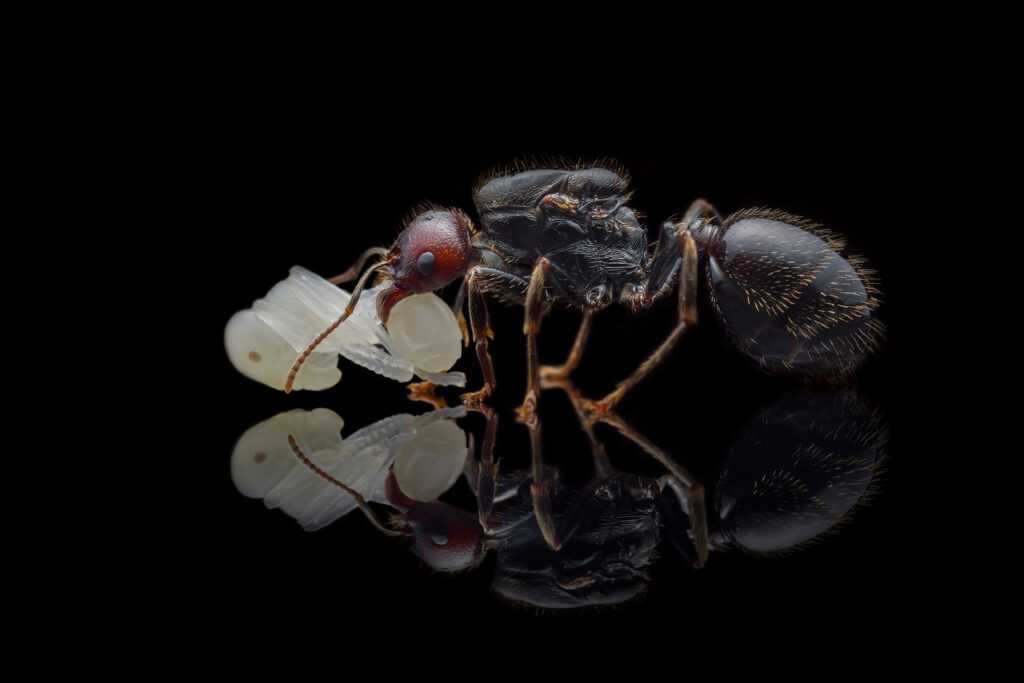Pheidole pieli Ants: Fast-developing, Small & Aggressive Colony
Colony Characteristics
The Pheidole pieli ants are known for their **polygynous** colony type, allowing for multiple queens within a single colony. These ants can have a substantial colony size of up to 3000 individuals. They exhibit a fast development speed, making them an exciting species to observe and care for.
Size and Color
The size of Pheidole pieli ants varies among different members of the colony:
- **Queen:** The queen ant measures approximately 4-5 mm in length.
- **Workers:** The worker ants range in size from 2-3 mm.
- **Majors:** Majors, which are larger worker ants with specialized functions, measure around 3-4 mm in length.
In terms of color, Pheidole pieli ants are predominantly dark brown. However, the majors within the colony stand out with a bright red abdomen, adding visual interest to the colony.
Nutrition
Pheidole pieli ants have diverse dietary preferences, ensuring they receive proper nutrition. Their diet includes:
- **Food Insects:** These ants feed on food insects such as cockroaches and crickets, providing them with essential proteins.
- **Syrup:** They also require syrup, which can be prepared using a mixture of water and honey in a ratio of 4:1 or 3:1, ensuring a good source of carbohydrates.
- **Fruits and Vegetables:** Pheidole pieli ants benefit from fruits and vegetables, supplying them with additional vitamins and minerals.
- **Jelly:** A small amount of jelly can be provided as a treat for these ants.
- **Cooked Chicken:** Cooked chicken without salt can be offered to the ants as a protein-rich food source.
Humidity and Temperature Requirements
Proper humidity and temperature levels are crucial for the well-being of Pheidole pieli ants:
- **Arena Humidity:** It is recommended to maintain an arena humidity level between 30-50% to create a comfortable environment for the ants.
- **Nest Humidity:** Inside the nest, a slightly higher humidity level of 50-70% is preferable.
- **Arena Temperature:** Keep the temperature in the arena area at a range of 25-28 °C to mimic their natural habitat.
- **Nest Temperature:** The temperature inside the nest should be slightly lower, ranging from 22-26 °C.
Species Features and Nest Recommendations
Pheidole pieli ants stand out due to their small size and aggressive behavior, making them fascinating to observe. Additionally, these ants have the unique capability of consuming grains as part of their diet.
When choosing a nest for breeding Pheidole pieli ants, it is recommended to consider materials like acrylic, cork, plaster, or aerated concrete. These materials provide a suitable environment for the colony to thrive. Selecting appropriate nesterias ensures the well-being of the ants and allows for easier observation and maintenance.
With their polygynous colony type, fast development speed, and unique features, Pheidole pieli ants offer an engaging and captivating antkeeping experience. By providing proper nutrition and maintaining optimal humidity and temperature levels, you can ensure the health and well-being of your Pheidole pieli colony.

















Reviews
There are no reviews yet.